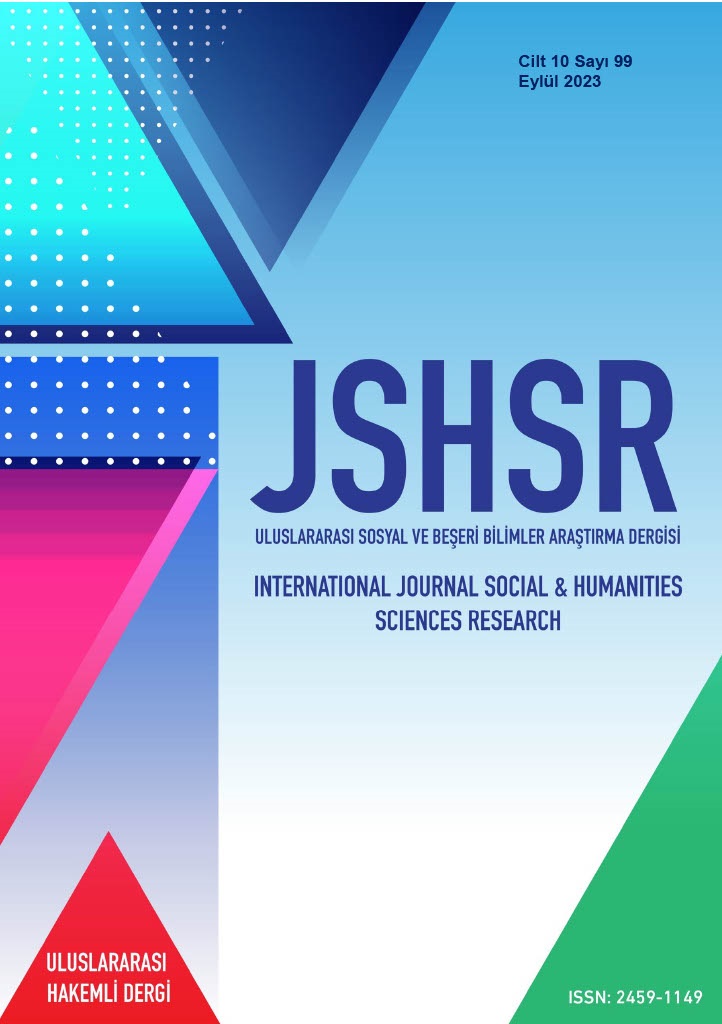Documentation of Architectural Pattern and Traditional Houses in Burhaniye Çallı Rural Settlement
DOI:
https://doi.org/10.5281/zenodo.8408757Keywords:
Calli, Burhaniye, rural settlement, rural architecture, rural house, traditional house, villageAbstract
A part of our traditional houses is located in rural settlements. Rural houses reflect the natural characteristics of the place, such as topography, climate, local construction materials, and the functions, economic conditions, construction techniques, and culture created by rural life. However, migration from rural to urban areas and abandonment of villages is one of the most important problems in preserving the architecture of the rural settlements. Calli Rural Settlement, which is affiliated with Burhaniye, Balıkesir province, is an abandoned and ruined settlement. The aim of this study is to document the houses of Calli Rural Settlement. The study is based on an analysis of findings from a field survey that determined the in-situ conditions of the village and a literature review. Measured surveys of 22 houses were taken, photographed, and documented, and the architectural features of the buildings were recorded in the "Rural Building and Construction System Inventory". Architectural features of the settlement such as physical architectural pattern, land use of buildings, auxiliary buildings, courtyard, garden-house entrance relationship, interior spaces and space organization of the houses, plan typology, the number of floors, materials and construction techniques, and exterior and interior building elements were determined. It has been concluded that Calli Rural Settlement is a hillside settlement and was shaped in this context. In conclusion, it is stated that the single-story, two- or three-room spaces are one example of the utilitarian approach of rural architecture with the rhythm and scale brought by the simple, non-covering rubble stone facades and harmony with topography. It is emphasized that it has unique qualities due to both the continuity in its building materials, the locality of traditional construction systems, and the harmony of the settlement with the place. This documentation study is important as it is the first step of any physical architectural intervention aimed at the conservation, restoration, or revitalization of the village.
References
Ahunbay, Z. (1999). Tarihi çevre koruma ve restorasyon. YEM Kitabevi.
Ahunbay, Z. (2019). Kırsal peyzajın korunması ile ilgili ilkeler. B. Ekimci (Ed.), Kırsal mimari miras sempozyumu içinde. ESTÜ Yayınları.
Aran, K. (2000). Barınaktan öte: Anadolu kır yapıları. Tepe Mimarlık Kültürü Merkezi.
Ayhan, A. (2011). Balıkesir’in kimliği 1: Türkmenler, Manavlar, Yörükler, Çepniler, Tahtacılar. Balıkesir Belediyesi Kent Arşivi.
Devlet Meteoroloji İşleri Genel Müdürlüğü (2017). Balıkesir (Edremit) Meteoroloji istasyonlarının iklim verileri.
Efe, R., Soykan, A., Cürebal, Ğ. (2011). Burhaniye doğal kaynak değerleri. Burhaniye Belediyesi.
Eldem, S. H., (1955). Türk evi plan tipleri. İTÜ.
Gökkuş, A., Parlak A. Ö., Baytekin H., Alatürk F. (2013). Gökçeada’nın çalılı mera ekosistemlerinde aptesbozan (sarcopoterium Spinosum (L.) Spach) mücadelesi. ÇOMÜ Ziraat Fakültesi Dergisi, 1 (1), 67- 72 .
Şimşir, N. (2016). The Karakeçili nomads around Balıkesir in fırst half of 19th century. Türk İslam Medeniyeti Akademik Araştırmalar Dergisi, 11(22), 99-132.
URL1-https://yandex.com.tr/harita/104715/burhaniye/geo/calli_mah_/2215971059/?l=sat&ll=27.050721 %2C39.466616&z=16.
URL2-http://www.burhaniye.bel.tr/burhaniye/burhaniye-hakkinda.html.
URL3-https://www.milliyet.com.tr/yerel-haberler/balikesir/burhaniyenin-nufusu-58-bin-775-oldu-12603308.
URL4-https://www.yeniasir.com.tr/cumartesi/2019/02/02/11-kisilik-yasam-filme-konu-oldu.
URL5-https://biruni.tuik.gov.tr/nufusmenuapp/menu.zul.
URL6-https://biruni.tuik.gov.tr/medas/?kn=95&locale=tr.
URL7-http://www.icomos.org.tr/Dosyalar/ICOMOSTR_tr0464062001536913566.pdf/
Downloads
Published
How to Cite
Issue
Section
License
Copyright (c) 2023 INTERNATIONAL JOURNAL OF SOCIAL HUMANITIES SCIENCES RESEARCH

This work is licensed under a Creative Commons Attribution 4.0 International License.


